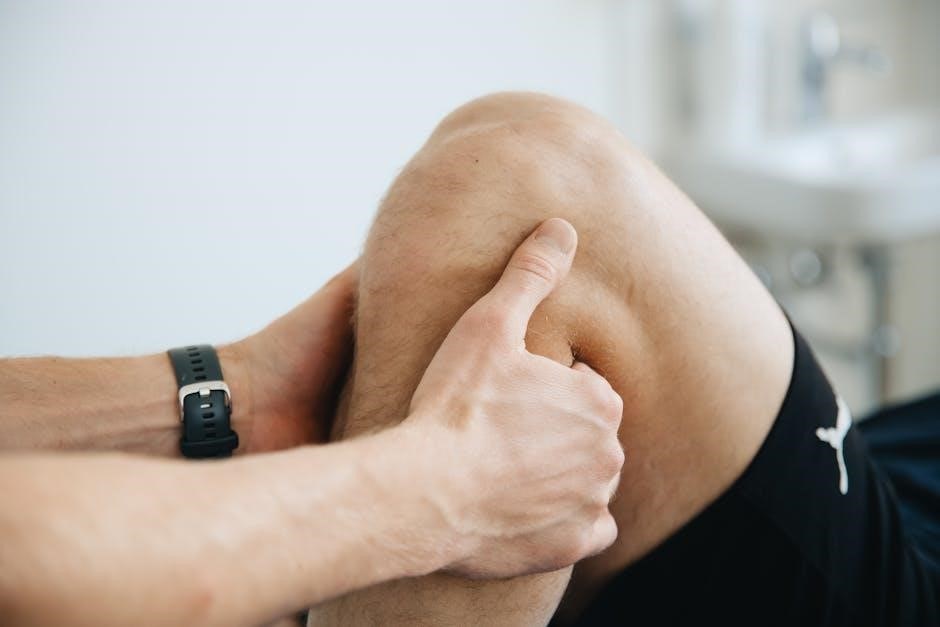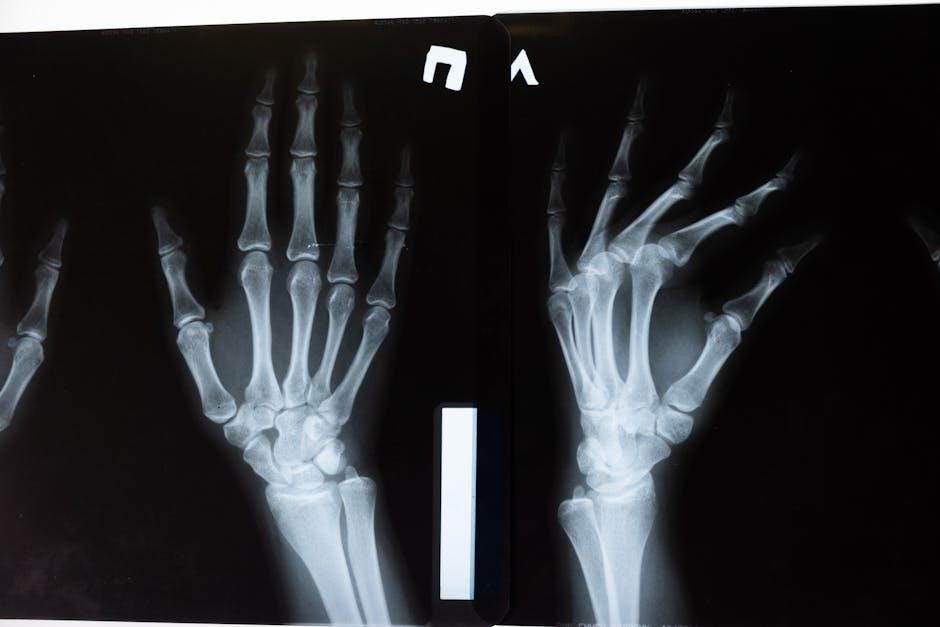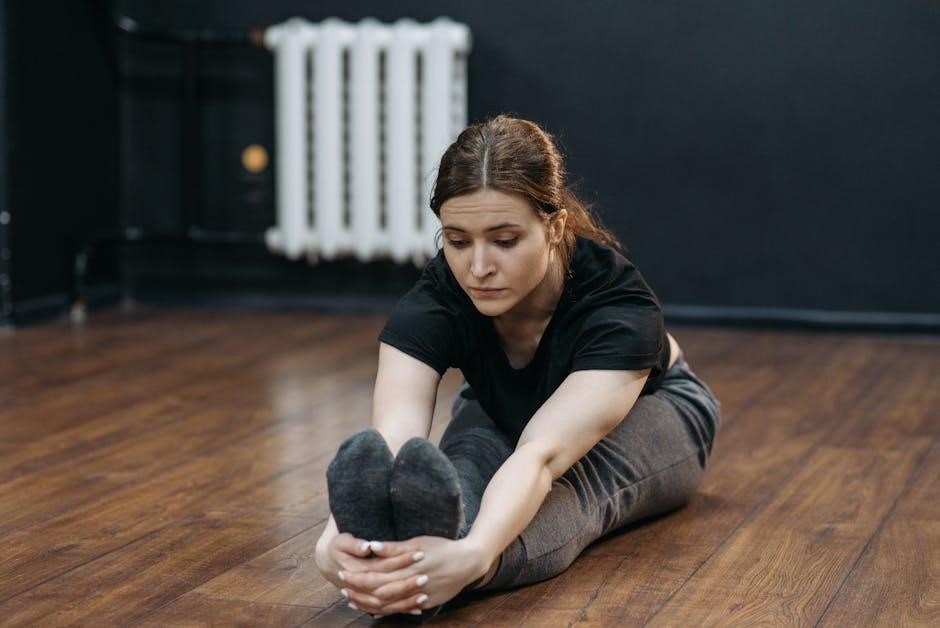Exercises for ac joint pain relief are described in a pdf document, outlining criteria and precautions for nonoperative treatment, including shoulder girdle muscles strengthening routines daily.
Understanding the Importance of Exercise for AC Joint Health
Regular exercise is crucial for maintaining AC joint health, as it helps strengthen the surrounding muscles and improve flexibility. A well-structured exercise program can alleviate symptoms of AC joint pain and improve overall function. According to various studies, exercise plays a significant role in preventing and managing AC joint disorders. The exercises outlined in the ac joint exercises pdf document are designed to target the shoulder girdle muscles, which provide stability and support to the AC joint. By performing these exercises regularly, individuals can reduce their risk of developing AC joint problems and improve their overall quality of life. Additionally, exercise can help improve posture, reduce stress, and promote overall well-being, all of which are essential for maintaining healthy joints. A comprehensive exercise program should be tailored to an individual’s specific needs and abilities.
Causes of AC Joint Pain
Repetitive motions and genetics are common causes of ac joint pain and inflammation in the shoulder joint area daily.
Repetitive Motions and Genetics as Contributing Factors
Repetitive motions that put stress on the joint can lead to pain and inflammation, while genetics can also play a role in the development of ac joint pain. Family history of arthritis is a contributing factor, and certain occupations that involve repetitive arm movements can increase the risk of developing ac joint pain. Understanding the causes of ac joint pain is essential in developing effective treatment and prevention strategies. By identifying the contributing factors, individuals can take steps to reduce their risk of developing ac joint pain and improve their overall shoulder health. Regular exercise and stretching can help alleviate symptoms and improve function, and a pdf document can provide a comprehensive guide to exercises and treatment options for ac joint pain. Proper diagnosis and treatment are crucial in managing ac joint pain and preventing further complications.

Recommended Exercises for AC Joint Arthritis
Regular exercise helps alleviate symptoms and improve function with pendulum exercises daily.
Pendulum Exercise for Stretching the Outer Shoulder and Rotator Cuff
The pendulum exercise is a useful routine for stretching the outer shoulder and rotator cuff, helping to alleviate pain and improve mobility in the ac joint area.
To perform this exercise, stand beside a table or counter and place your affected arm at your side, with your hand hanging straight down from your shoulder.
Then, bend your knees slightly and lean forward at the hips, keeping your back straight and your arm straight, allowing your arm to swing freely like a pendulum.
This exercise should be done gently and slowly, without bouncing or forcing your arm beyond a comfortable range of motion, and can be repeated several times a day for optimal results.
Regular practice of the pendulum exercise can help to reduce stiffness and improve function in the shoulder joint.
Return to Sport after AC Joint Injury
Full pain-free range of motion is necessary before returning to sports activities slowly and safely daily.
Full Pain-Free Range of Motion and Protective Measures
To ensure a safe return to sports, it is essential to achieve a full pain-free range of motion. This can be accomplished through a series of exercises and stretches that target the affected area. Additionally, protective measures such as padding and strapping can be used to provide extra support and stability to the joint. A circular piece of padding with a hole cut in the middle can be centered over the joint and kept in place by strapping or a specialized device. This can help to reduce the risk of further injury and provide peace of mind for athletes returning to contact sports. By taking these precautions, individuals can minimize their risk of re-injury and make a successful return to their sport. Regular exercise and stretching routines can also help to maintain joint health and mobility.

Anatomy of the AC Joint
The ac joint is located at the outside point of the collar bone, attaching to the shoulder blade with four ligaments providing stability and support always naturally.
Location and Stability of the AC Joint in the Shoulder Complex
The ac joint is situated at the outside point of the collar bone, where it attaches to the front of the shoulder blade, forming a complex structure.
This joint is kept stable by four ligaments that provide support and stability, allowing for a range of motions and activities.
The location of the ac joint is crucial, as it allows for the attachment of muscles and tendons that enable movement and flexibility.
The stability of the ac joint is essential for maintaining proper shoulder function and preventing injuries or conditions that can cause pain and discomfort.
Understanding the location and stability of the ac joint is important for developing effective exercises and treatment plans, as outlined in the ac joint exercises pdf document, which provides guidance on nonoperative treatment and rehabilitation.

Post-Operative Care for AC Joint Reconstruction
Minimize pain and inflammation with a home exercise program and protective measures after surgery daily.
Goals and Precautions for the First Few Weeks after Surgery
The primary goals after surgery include minimizing pain and inflammation, and maintaining full range of motion in the elbow and wrist. A home exercise program is typically initiated to achieve these goals. It is essential to protect the fixation from the weight of the arm or any heavy objects, and to avoid elevation past 90 degrees for the first few weeks. Additionally, excessive reaching and internal or external rotation should be avoided to prevent complications. By following these precautions and guidelines, patients can ensure a smooth and successful recovery after AC joint reconstruction surgery, and eventually progress to more advanced exercises and activities as outlined in the rehabilitation protocol. Regular follow-up appointments with the surgeon or physical therapist are crucial to monitor progress and address any concerns or questions that may arise during the recovery period.

Stage 1 Exercises for AC Joint Rehabilitation
Initial exercises focus on postural awareness and shoulder blade squeeze routines daily for optimal recovery.
Postural Awareness and Shoulder Blade Squeeze Exercise
Postural awareness is essential for maintaining proper alignment and reducing strain on the joint. The shoulder blade squeeze exercise is a simple yet effective way to improve posture. To perform this exercise, stand or sit with good posture and squeeze your shoulder blades together, holding for a few seconds. Release and repeat for several repetitions. This exercise can be done throughout the day, especially when sitting or standing for long periods. It is also important to maintain a full pain-free range of motion and avoid repetitive motions that can put stress on the joint. By incorporating postural awareness and shoulder blade squeeze exercises into your daily routine, you can help support the joint and reduce the risk of injury or strain. Regular exercise can help alleviate symptoms and improve function, making it an essential part of any treatment plan.
